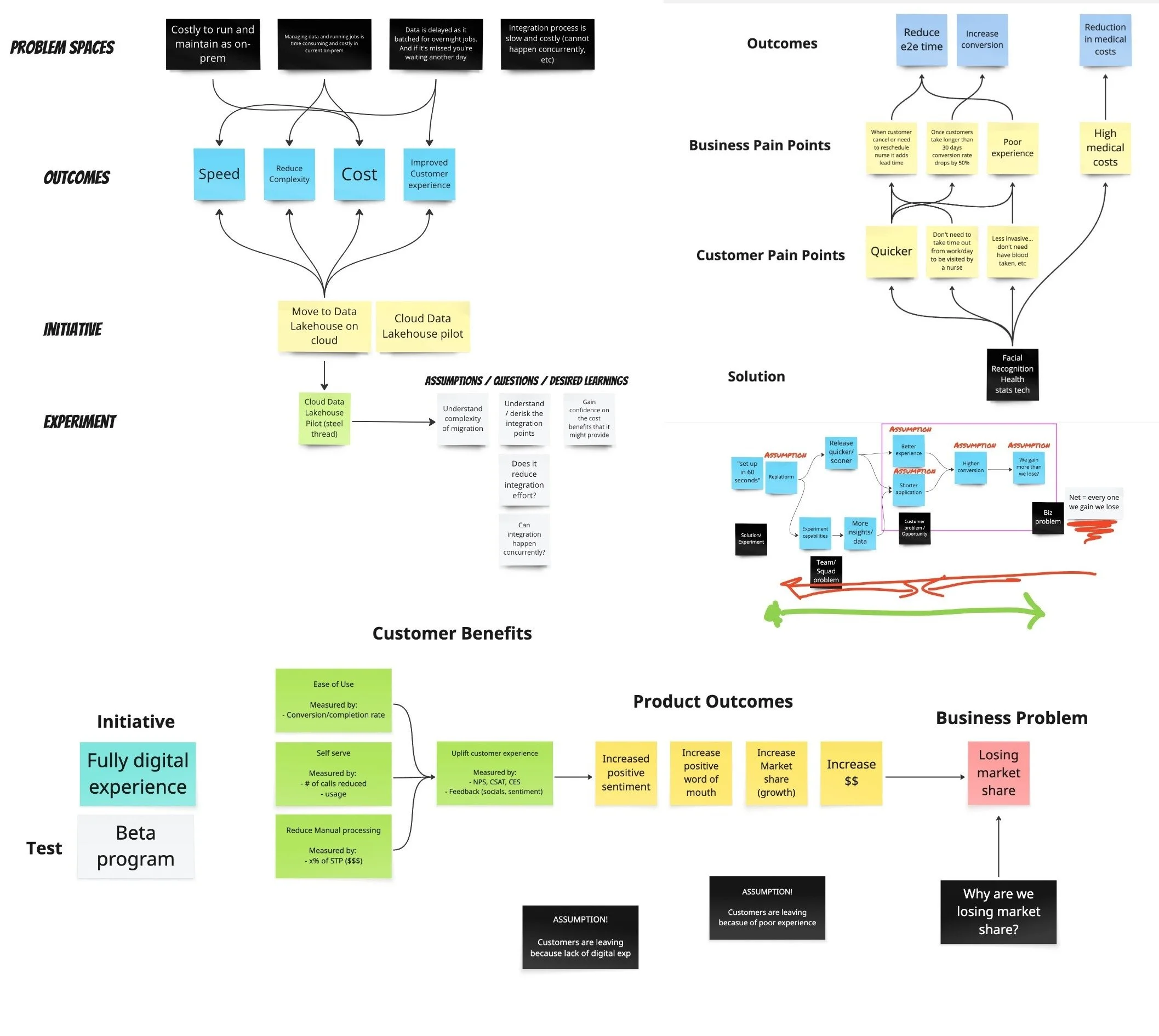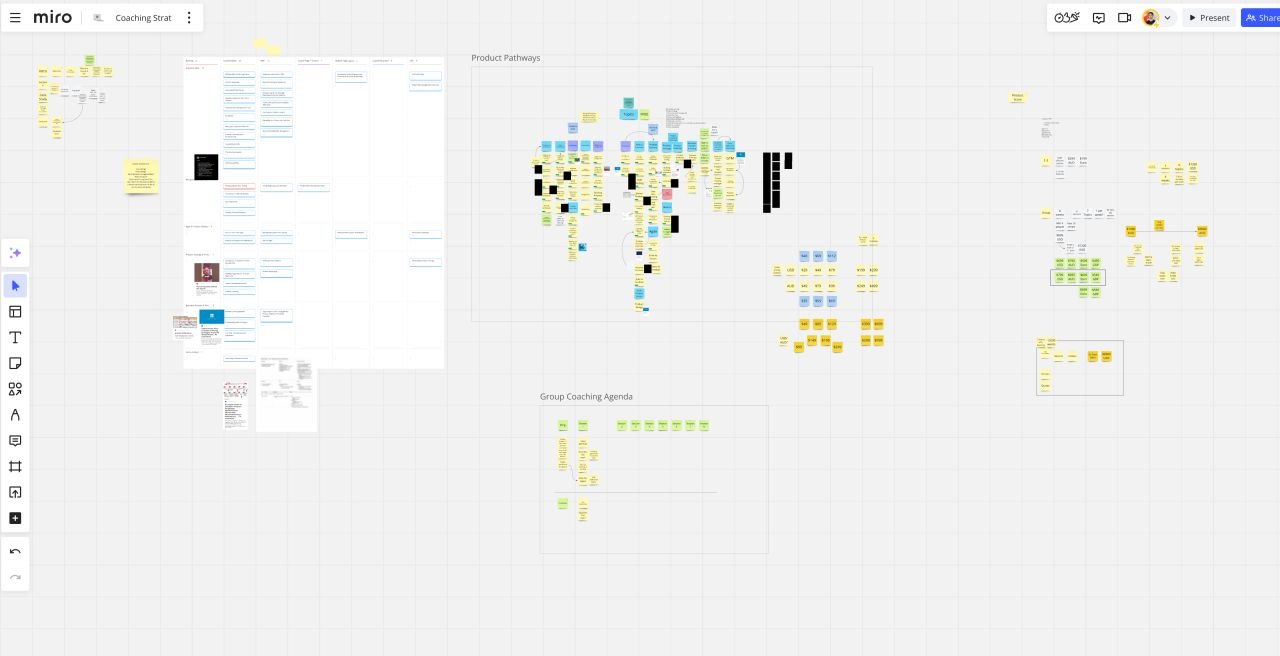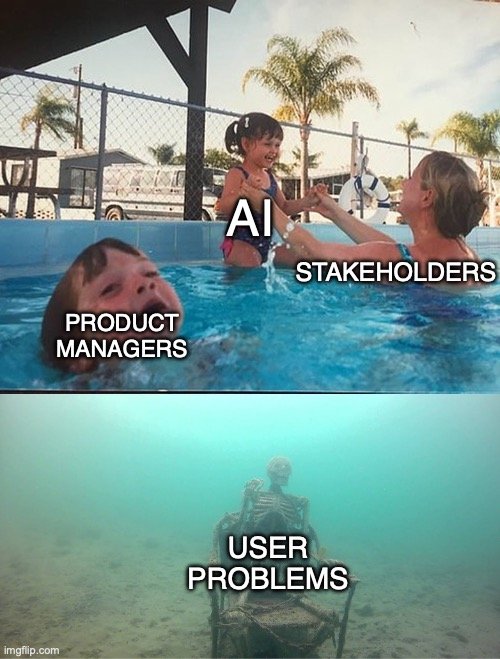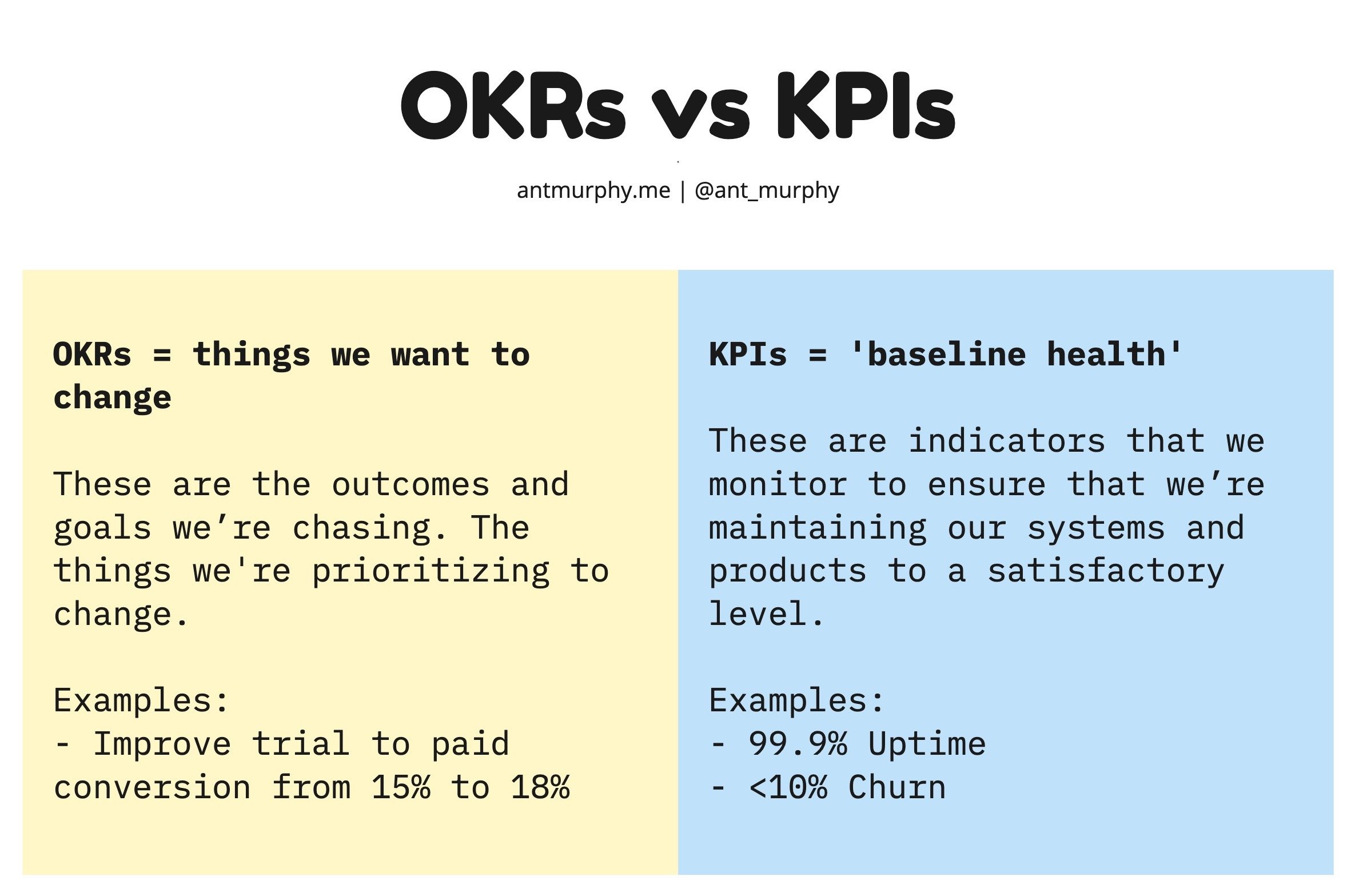4 Steps to Building a Product Strategy
Hey I’m Ant and welcome to my newsletter where you will find practical lessons on building Products, Businesses and being a better Leader.
You might have missed these recent posts:
- 5 Steps From Features to Outcome Roadmap
- Don’t Follow Frameworks. Break them.
- Good Leader, Bad Leader
This is the process I use and have taken dozens of product leaders and founders through to build their product strategy.
It's deliberately designed to be lightweight, flexible but not a checklist.
This means there’s a lot of work that you still need to do. Rather than trying to ask you to fill-in-the-blanks like “what’s your unique value prop” or “target customer” you’re going to have to do the work to consider what inputs and decisions are important in your context.
But don’t worry, I have a template (link at the end) which has some scaffolding to help guide you so you're not stuck with a blank page.
The 4 steps are:
Gathering Inputs
Building Strategic Narratives
Finding Leverage
Choices
Simple but not easy! Let’s go through each.
Here’s a 5 minute clip walking through these steps and a longer walkthrough of the template here.
1. Gathering Inputs
An effective product strategy isn’t about guessing, it’s informed by data.
Therefore your first step is gathering data.
Specially you want to gather data, information and any other considerations about your market, customers, product and business.
I think of building a strategy like building a puzzle. You need to gather all the pieces and start to put it together. As you do things start to take shape and make sense.
It’s worth noting that you might need to go do some research as part of this step.
You can also spend too long here. Don’t get stuck on step one for weeks or months.
Remember that a strategy isn’t set in stone you can update it, pivot and adjust as you learn more and new information becomes available. The goal should be to gather enough information to progress to step 2.
2. Building Strategic Narratives
If step one is gathering inputs then step two is making sense of the data.
However, this is where the puzzle analogy breaks down. One of the difficult things about strategy is, you don’t know what the puzzle is, nor what the pieces even look like.
Which means you have to learn to filter the noise from the signals.
Here’s a hypothetical thought experiment to illustrate:
Let's imagine there's new data out on company redundancies due to AI. How do you interpret this?
Does this suggest;
The more companies adopt AI, the more redundancies?
That AI one day will be capable of replacing ALL jobs and those jobs one day.
Both?
Something else?
Let's assume you also gathered another data point that shows throughout history when there's been significant technological advancements, whilst it has at first replaced a lot of jobs, over the medium and long term new technologies created more jobs (which has been the case by the way - fun fact!).
Which is signal vs noise?
Do you believe this trend will be the same with AI?
Or do you believe it’s noise and this time will be different?
The latter would make you ignore this data and only focus on the redundancy data, make a ‘bet’ based on that.
If you believe the former you’re comfortable mixing these two data points together; whilst redundancies related to AI will continue in the short-term over the long term new jobs will be created and things like universal basic income won’t be necessary.
But of course there’s no way of knowing which will be true and that’s the hard part about strategy!
“Strategy needs to have a theory” as Roger L Martin frames it.
You have to have conviction about key hypotheses that sit behind your strategic choices and that's what this step is focused on coming up with.
Filter the noise from the signals, interpret them and build your hypotheses.
I call these ‘strategic narratives’.
Strategic Narrative = Insights based on data + hypothesis about the future
3. Finding Leverage
Your strategic narratives form the backbone of your strategy. They are the things you’re going to make ‘bets’ against and whilst they help to guide you, you still need to make those choices.
That’s where this step comes in. It’s about ideating and narrowing down different choices you might want to make based on your narratives.
However, I deliberately call this step leverage because one of the ways you do this is by thinking through the lens of leverage - aka which choices are going to give me the highest ROI?
To make this tangible, when I do this with my clients this step is typically where we spend the most time.
It’s where we start to look at (depending on our narratives):
What’s our moat?
What are our unique advantages?
Pros and cons of different paths
What are we best positioned for vs not?
Possible flywheels and other growth motions
etc…
If you’re familiar with Roger L Martin, you can think of this as ideating on your ‘how will we win’ and the previous steps help you narrow down your ‘where will we play’ through narratives.
There’s no magic approach for this step, it’s honestly a lot of time around a whiteboard sketching out different approaches.
My guidance based on experience for this step is take whatever time you think you need and double it (at least!).
4. Choices
Finally we need to actually make some difficult choices.
A litmus test I’ve developed is; 'if the choices don’t feel hard to make, then they’re probably not the right choices.'
It's a sign that you either haven’t gone deep enough or specific enough to actually narrow things down.
Your strategy should narrow down the work, if it doesn't eliminate stuff then it’s too high-level or ambiguous.
This brings me to another hard part of strategy; there’s often no ‘right’ answer.
Many products have taken different approaches and both have ended up wildly successful.
The key here is to make choices that focus the product.
Here's a clip from an interview with Jony Ive, talking about Steve Jobs’ ruthless focus that I think a lot about during this step.
"Focus means is saying no to something, that with every bone in your body you think is a phenomenal idea and you wake up thinking about it, but you say no to it because you're focusing on something else." - Jony Ive
As some scaffolding you want to be able to answer;
What is the choice we’re making? (either to do something, be something and also to NOT do something) for example, “building a Freemium version”
Who are we targeting with this and why?
Why do we believe this is a good idea? (linking back to the narratives)
How does this support our higher-level (business) goals?
How will we achieve this? (the finer details)
How will we measure progress and success?
Conclusion
And that’s it.
That’s the 4 steps I use to build a product strategy:
Gathering Inputs: Information and data gathering. What are all the data, trends, constraints, and other information that needs to shape the strategy?
Building Strategic Narratives: Key beliefs that you have high conviction about based on the data that form the backbone of your strategy.
Finding Leverage: Ideating different choices that you might make as a result of your narratives and the data. Ideally looking for what choice will give you the most leverage.
Choices: placing ‘bets’ in the form of choices to do specific things. The end output of a strategy.
As I said, simple but not easy!
It’s also worth noting (and this attributes to the ‘not easy’ part) this is all non-linear.
Whilst yes at a macro you walk through these 4 steps, strategy is messy. You’ll go back-and-forth between each step and even feel like you’re going in circles at times but it’s all part of the process.
Like I said, it should feel hard!
As promised at the start, I have all this wrapped up into a workshop board here, that also includes some scaffolding to help you work through the steps.
I hope that's all helpful! 🙌
Forward this to someone who could use this format/template.
As usual, thanks for reading.
And don’t forget to get $100 off the Product Discovery course. Use code: DISCOVERY
Feel free to share the course also, I appreciate all those who have already given it a plug in their teams/company 🙏
/Ant
For those new here… Hi 👋 I’m Ant, a Product Coach based in Sydney but work with clients all over the world.
My day job is working with companies to transform to the product model. My evening job is creating content and helping individual product managers and founders ship better products through the Product Mentorship.















Your OKRs don’t live in a vacuum.
Yet this is exactly how I see many organizations treat their OKRs.
They jump on the bandwagon and create OKRs void of any context.
Here’s what I see all the time…